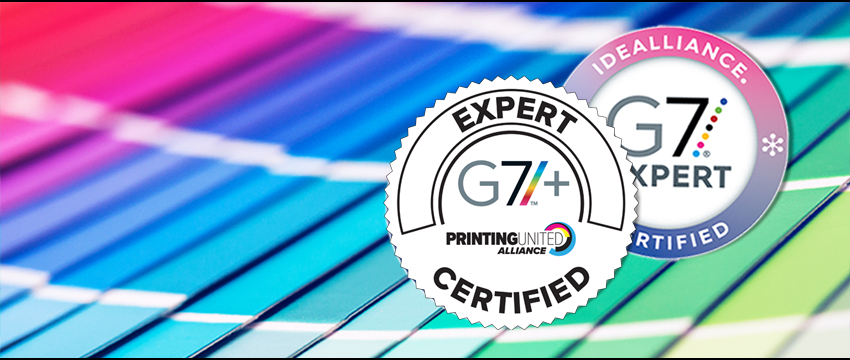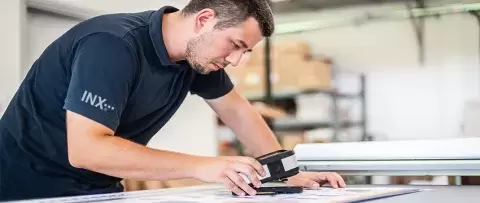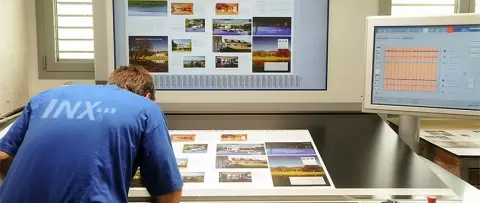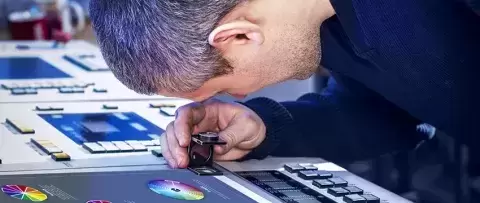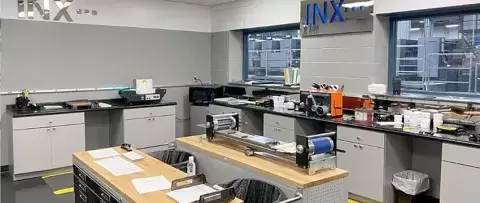G7+ Calibrated Printing: What is it & How it Differs from G7
G7® and G7+™* are terms that frequently come up in discussions about color management and print quality. While they share a common goal of improving color consistency and print accuracy, they are distinct in their applications and methodologies. Here’s a closer look at what G7+ calibrated printing entails and how it differs from the well-established G7 standard.
About G7 and G7+
Introduced in 2006 by Idealliance, G7 is a color specification and calibration method based on gray balance. G7 revolutionized the print industry by providing a common specification used by nearly all printers and brands in North America, as well by many printers around the world. The specification describes color targets for gray balance and tonality, and is the basis of print conditions such as GRACoL® and SWOP®. Unlike other calibration methods, G7 is based on the color measurement of gray and how it correlates to visual appearance rather than mechanical attributes like dot gain and density. One of the benefits of G7 is that any print system calibrated to G7 will look similar, allowing brands and others to create print products with similar appearance regardless of location or printing process.
When creating G7+ the goal was to maintain all the great things about G7 and how it works today, including shared neutral appearance and the relationship to GRACoL. After 18 years of use with many different print processes there were a few small improvements that Don Hutcheson, the inventor of G7 wanted to adjust. These areas occurred in extremely high density printing like inkjet with high saturation and large gamuts and low-density printing like newsprint and uncoated webs.
The difference between G7 and G7+
G7+ is very similar to G7 in that it defines gray balance and tonality. It also looks and performs virtually identical to G7 when used with traditional printing, such as offset, flexo and gravure. On an offset press today’s G7 calibration, and the G7+ calibration produce nearly identical results. The main difference between G7 and G7+ is the math used to calculate the gray balance and tonality. While there are some small differences in the calculation formula, and its resulting gray balance aims, the biggest differences are in G7+ tonality. For high density printing systems G7+ has a new feature called High Density Smoothing (HDS). The original G7 tonality was based on offset print tests conducted in 2004-2006, and then scaled for other printing systems. In most cases this worked but in a few cases the curves would create banding or undesirable results in extremely high-density printing systems (like large gamut inkjet). G7+ changes the way tonality is calculated, and from 75% and higher uses a TVI or dot gain based approach for the shadows, which results in smoothing the tonality in ¾ tones. This HDS function is meant to produce better results in high density printing systems. In addition to high density printing systems the G7+ tonality algorithm also helps low density print systems. In G7 the 25% tonality is locked and always the same, never changing. In G7+ the tonality changes across the entire gray scale, producing better results in low density printing systems.
While the gray balance formula for G7+ is so similar that most people would not see the difference there are some subtle changes. Traditional G7 was calculated in LAB, while G7+ is calculated using XYZ. In addition, the gray is closer to the gray calculated by SCCA (Substrate Corrected Colorimetric Aims) which is used by many brands and printers for simulation of non-standard substrates. The slightly different effect of the new algorithm is that the gray, while almost identical to the prior G7 gray aims is no longer perfectly neutral in the shadows and is closer to the SCCA calculations.
CONTACT
Ensure printing consistency and accuracy. Request a G7 Qualification Consultation.
Contact a G7 Specialist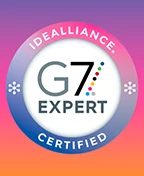
Where G7+ can make a difference
One of the biggest questions people may have is when to use G7 instead of G7+, and when will it make a difference. For traditional print G7 and G7+ are virtually identical so there is no rush to G7+ for those doing traditional printing. There is also no reason not to use G7+ for traditional print as well, as the results normally meet and pass the requirements of the current G7 Master program.
The real areas that G7+ can make a difference are:
- High density printing systems: For high density printing systems such as inkjet and industrial print G7+ with its High Density Smoothing (HDS) has some potential benefits, creating smoother transitions and more pleasing results in the shadows.
- Low density printing systems: For low density printing such as newsprint and uncoated web the results are improved tonality, and better appearance.
- Packaging workflows using SCCA: For packaging workflows in which the proof is an SCCA paper simulation workflow, G7+ will be slightly closer to the proof. While many may not notice, discriminating users will be able to tell the difference.
Conclusion
Both G7 and G7+ are vital in the world of print production, but they serve different purposes and address varying levels of complexity in color management. G7 offers a robust framework for achieving color consistency and is widely applicable across various printing processes. G7+, on the other hand, provides an enhanced approach for environments where precise color control is critical, incorporating additional metrics and rigorous standards to ensure superior color accuracy. Understanding the distinctions between G7 and G7+ can help print professionals choose the right standard for their needs and ensure that their printed materials meet the highest quality standards. Whether you’re working with G7 or exploring the advanced capabilities of G7+, both methodologies contribute significantly to the pursuit of perfect print quality.
Learn more about G7 and G7+ Calibrated Printing
To learn more about G7 as well as G7+, visit PRINTING United Alliance for information on the G7+ Specification, as well as downloads and a schedule of classes.
*G7®, G7+™, GRACoL®, Idealliance® and SWOP® are trademarks of PRINTING United Alliance.




